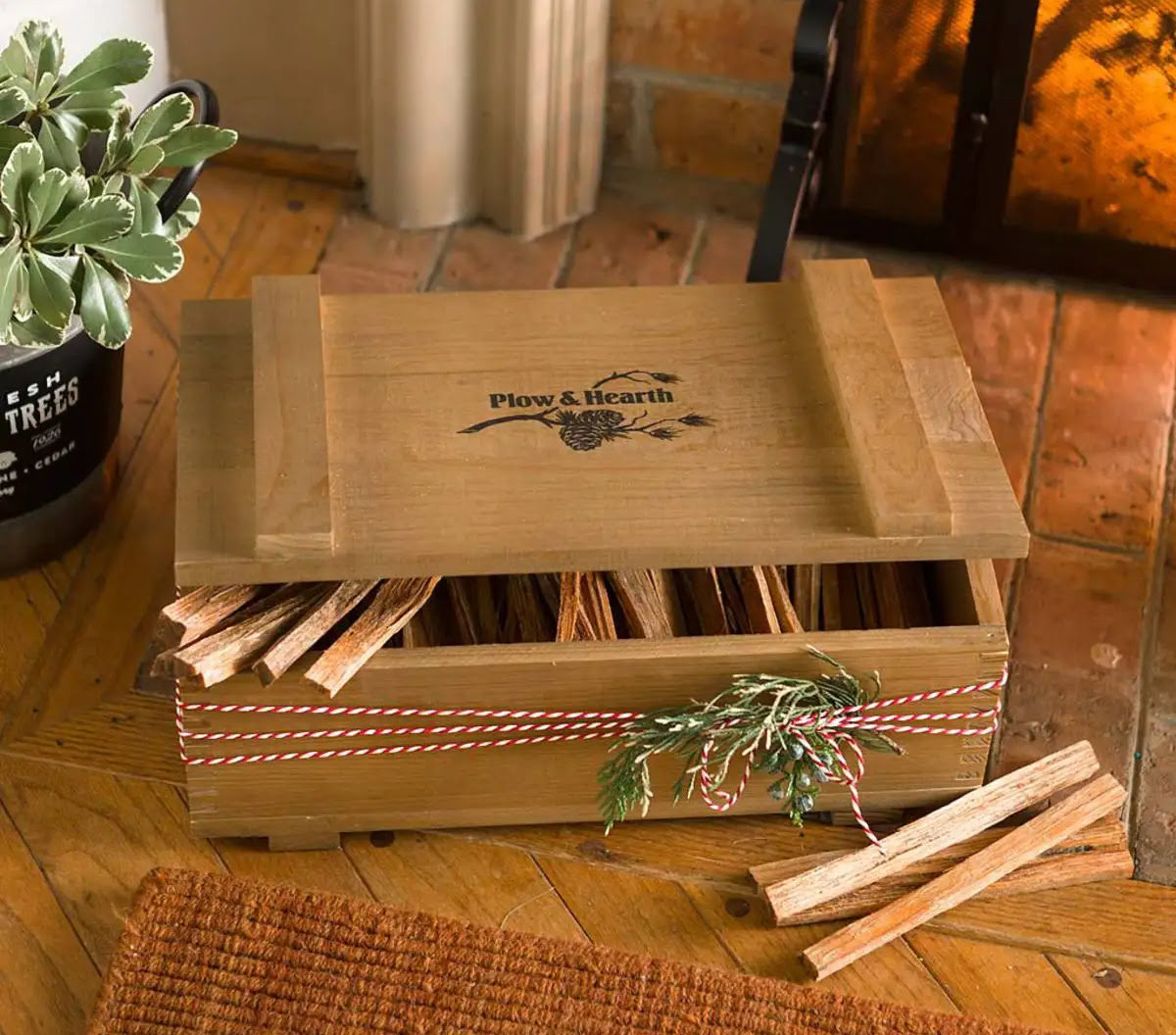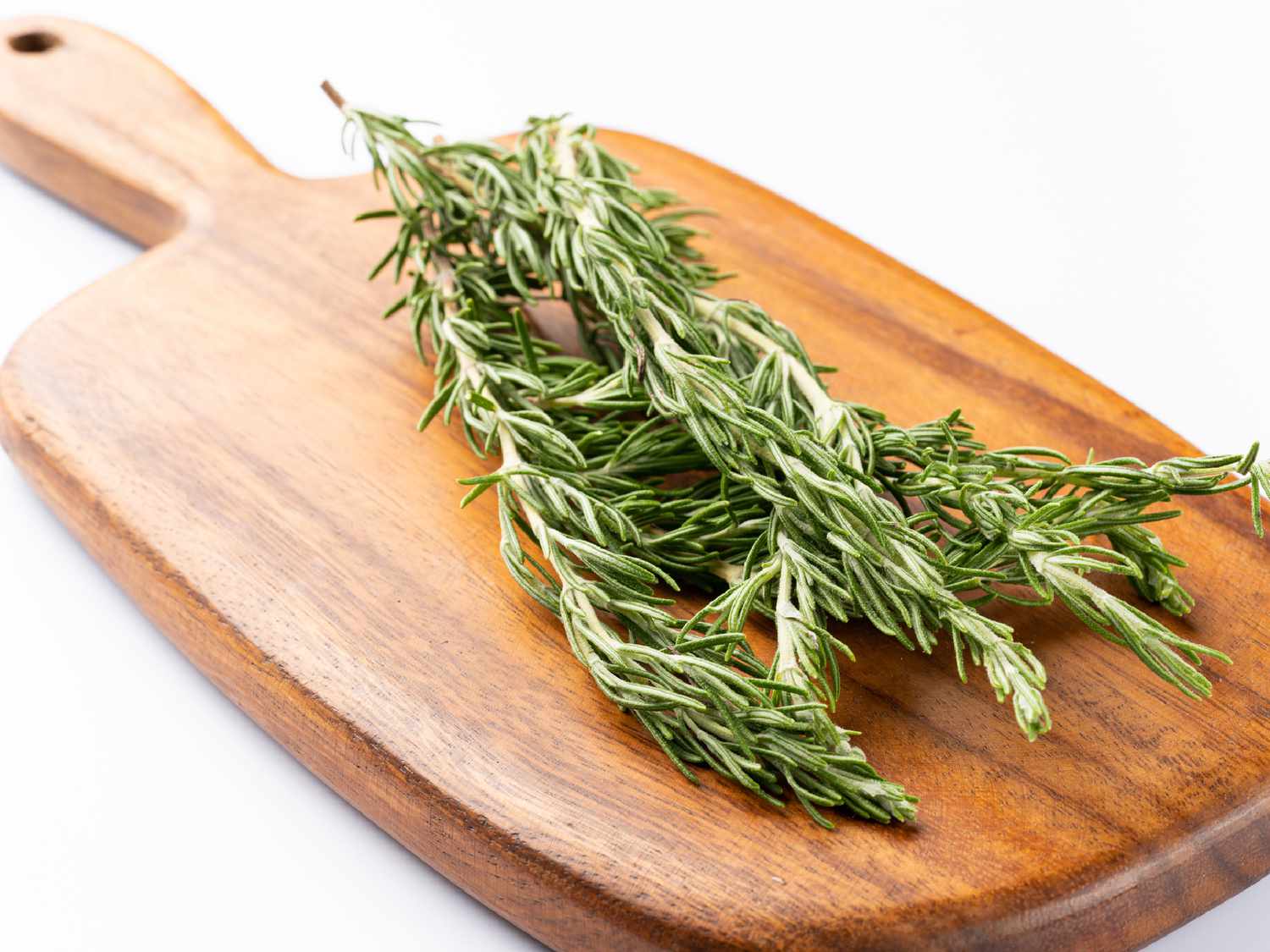

Articles
How To Store Fatwood
Modified: March 2, 2024
Learn how to store and preserve fatwood with our informative articles. Keep your fire-starting material dry and ready for use.
(Many of the links in this article redirect to a specific reviewed product. Your purchase of these products through affiliate links helps to generate commission for Storables.com, at no extra cost. Learn more)
Introduction
Welcome to the world of Fatwood! If you love camping, starting cozy fires, or simply enjoying a warm and inviting ambiance, then this article is for you. Fatwood, also known as “lighter pine,” is a natural fire-starting material that has been used for centuries. It is highly resinous and comes from the heartwood of pine trees, making it a reliable and efficient fire starter.
In this article, we will explore the wonderful world of Fatwood and delve into the benefits it offers. We will also guide you on how to choose the best quality Fatwood and provide you with expert tips on how to store it effectively.
Whether you are an avid camper, an outdoor enthusiast, or simply someone who enjoys a cozy fire in their fireplace, Fatwood is a valuable resource. So, let’s dive in and discover all there is to know about this amazing fire-starting material!
Key Takeaways:
- Fatwood, also known as “lighter pine,” is a highly resinous and easy-to-ignite fire-starting material derived from pine trees. Its long burn time, pleasant aroma, and resistance to dampness make it a reliable and eco-friendly choice for starting fires.
- When storing Fatwood, whether indoors or outdoors, it’s crucial to keep it in a dry location, protect it from moisture and direct sunlight, and regularly inspect for any signs of dampness. Alternative storage methods such as bundles, mesh bags, or glass containers offer additional flexibility and organization for your Fatwood supply.
Read more: How To Store Store-Bought Bread
What is Fatwood?
Fatwood, also known as lighter pine, is a type of firewood that is highly resinous and rich in natural oils. It is derived from the heartwood of pine trees, which refers to the darker, inner part of the tree trunk. This part of the tree contains a high concentration of resin, making it an excellent fire starter.
Historically, Fatwood has been used by indigenous cultures and early settlers as an effective way to start fires. Its resinous nature allows it to catch fire quickly and sustain a flame, making it a reliable resource in various outdoor settings.
One of the defining characteristics of Fatwood is its distinct scent. The resin in the wood produces a strong, pleasant aroma, often reminiscent of pine or cedar. This scent not only adds to the charm of using Fatwood as a fire starter but also helps to create a soothing and tranquil atmosphere.
Unlike other types of firewood, Fatwood is incredibly easy to ignite. You can use it to start fires in fireplaces, wood stoves, campfires, or even when grilling. Its high resin content enables it to catch fire even in damp conditions, making it a reliable option for outdoor enthusiasts.
Furthermore, Fatwood burns for an extended period of time. Once ignited, it produces a steady flame that can last for several minutes, providing ample time to get your fire going or to set up your campsite. This long-lasting burn is particularly beneficial when you need a consistent and reliable source of heat in outdoor or survival situations.
Overall, Fatwood is a fantastic fire-starting material due to its resinous nature, ease of ignition, pleasant scent, and long-lasting burn. Its natural properties make it a popular choice among outdoor enthusiasts, campers, and individuals looking to create a cozy and inviting ambiance.
Benefits of Fatwood
Fatwood offers numerous benefits that make it an exceptional fire-starting material. Let’s explore some of the key advantages of using Fatwood:
- Easy Ignition: One of the greatest benefits of Fatwood is its ease of ignition. Thanks to its high resin content, it ignites quickly, even in adverse weather conditions. This makes it a reliable and efficient option for starting fires when you need them most.
- Long Burn Time: Fatwood burns for an extended period, providing you with a steady and consistent flame. This is especially advantageous in outdoor settings where you may need a continuous source of heat or when you want to enjoy a relaxing evening by the fireplace without constantly tending to the fire.
- Resistant to Dampness: One of the remarkable qualities of Fatwood is its ability to ignite even when damp. The resin in the wood acts as a natural water repellent, allowing it to catch fire and burn effectively in wet or damp environments such as rainy camping trips or when you’re trying to start a fire with damp firewood.
- Natural and Environmentally Friendly: Fatwood is derived from the heartwood of pine trees, making it a natural and sustainable fire-starting material. Unlike chemical fire starters or accelerants, Fatwood is free from harmful substances, making it an eco-friendly choice for those who prioritize environmental consciousness.
- Pleasant Aroma: The resinous nature of Fatwood gives it a delightful and distinctive scent. When burned, it releases a pleasant aroma that adds to the overall experience of sitting around a fire. This aromatic quality helps create a cozy and inviting atmosphere, whether you’re camping in the wilderness or enjoying an evening at home.
- Compact and Portable: Fatwood is lightweight and compact, making it easy to carry on camping trips or outdoor adventures. Its small size and durability make it a practical choice for packing in your backpack or keeping in your camping gear.
With these benefits, it’s clear why Fatwood is a popular choice for starting fires. Whether you’re camping, enjoying a bonfire, or simply want to create a warm and welcoming ambiance, Fatwood offers reliability, convenience, and an enjoyable fire-starting experience.
Choosing Fatwood
When it comes to selecting Fatwood, there are a few factors to consider to ensure you get the best quality and most effective fire-starting material. Here are some important aspects to keep in mind:
- Resin Content: The resin content of Fatwood is crucial as it determines its ability to ignite and sustain a fire. Look for Fatwood with a high resin content as this will provide you with optimal fire-starting capabilities. The resinous quality is often evident by the rich, dark color of the wood.
- Scent: A significant characteristic of Fatwood is its pleasant aroma. When choosing Fatwood, give it a sniff to ensure it has a strong and appealing scent. The scent will not only enhance the ambiance but also indicate the quality of the resin present within the wood.
- Size and Shape: Consider the size of the Fatwood pieces you are purchasing. Look for chunks or sticks that are thick enough to provide a substantial flame but still manageable for igniting. The shape should also be taken into account – pieces with sharp edges and easy-to-break sections are advantageous for starting fires.
- Source: It’s important to consider the source of the Fatwood you are purchasing. Look for suppliers that offer sustainably harvested Fatwood, ensuring that the trees are not harmed in the process. Supporting responsible suppliers helps maintain healthy forest ecosystems.
- Packaging: Pay attention to the packaging of the Fatwood. Look for options that keep the Fatwood dry and protected from moisture. Moisture can interfere with the ignitability of the wood, so packaging that preserves the integrity of the Fatwood is essential for optimal fire-starting performance.
- Reviews and Recommendations: Take the time to read reviews and seek recommendations from experienced outdoor enthusiasts or campers. Their feedback can guide you in selecting reputable brands or suppliers that consistently offer high-quality Fatwood.
By considering these factors, you can ensure that the Fatwood you choose is of excellent quality and will provide you with a reliable and efficient fire-starting experience.
Store fatwood in a dry, well-ventilated area away from direct sunlight and moisture. Keep it in a sealed container or bag to prevent it from absorbing any excess moisture from the air.
Storing Fatwood Indoors
Proper storage of Fatwood is essential to maintain its effectiveness and keep it in optimal condition for fire starting. If you plan to store Fatwood indoors, follow these tips to ensure it stays dry and ready for use:
- Choose a Dry Location: Find a dry spot in your home to store the Fatwood. Keep it away from areas that are prone to moisture, such as basements or areas with high humidity levels.
- Use an Airtight Container: To prevent moisture from reaching the Fatwood, store it in an airtight container. You can use a plastic or metal container with a tight-fitting lid to keep the Fatwood protected from any humidity or moisture in the air.
- Keep it Elevated: Place the container of Fatwood on an elevated surface to further prevent any potential moisture absorption. This will also help in maintaining air circulation around the Fatwood, keeping it dry and preserving its efficacy.
- Avoid Sunlight: Keep the Fatwood away from direct sunlight, as exposure to UV rays can cause the resin to dry out and reduce its effectiveness as a fire starter. Choose a storage location that is away from windows or areas that receive direct sunlight during the day.
- Check for Moisture: Regularly inspect the Fatwood for any signs of moisture. If you notice any moisture buildup on the container or inside, remove the Fatwood, and allow it to dry thoroughly before returning it to storage. It’s important to address any moisture issues promptly to prevent the Fatwood from becoming damp and ineffective.
- Label and Date: To keep track of the freshness of your Fatwood, label the container with the date of purchase or storage. This will help you rotate your stock, using the oldest Fatwood first and ensuring you always have a fresh supply on hand.
By following these storage tips, you can maintain the quality and effectiveness of your Fatwood when storing it indoors. Proper storage will ensure that your Fatwood is always ready to be used as a reliable fire starter whenever you need it.
Read more: How To Store Basil From Grocery Store
Storing Fatwood Outdoors
If you prefer to store your Fatwood outdoors, there are a few important considerations to keep in mind. Follow these tips to ensure your Fatwood stays protected and ready for use:
- Choose a Dry and Covered Area: When storing Fatwood outdoors, select a location that is dry and sheltered from rain or snow. A covered porch, shed, or storage box can provide the necessary protection to keep the Fatwood dry.
- Elevate the Fatwood: Place the Fatwood on an elevated surface, such as a shelf or pallet, to prevent it from sitting directly on the ground. This will help prevent moisture absorption and allow for airflow to keep the Fatwood dry.
- Protect from Direct Sunlight: While it’s important to keep Fatwood protected from moisture, it’s equally crucial to shield it from direct sunlight. Prolonged exposure to the sun’s rays can dry out the resin and reduce the effectiveness of the Fatwood as a fire starter. Use a covered or shaded area to store the Fatwood outdoors.
- Consider a Waterproof Container: If you anticipate heavy rainfall or live in an area with frequent precipitation, you may want to consider storing the Fatwood in a waterproof container. This extra layer of protection will ensure that the Fatwood remains dry and ready for use, even during wet weather conditions.
- Regularly Inspect for Moisture: Check the Fatwood periodically for any signs of moisture buildup. If you notice any dampness or condensation on the Fatwood or inside the storage container, remove it and allow it to dry thoroughly before returning it to the storage location. Taking proactive steps to address moisture issues will help maintain the effectiveness of the Fatwood.
- Use a Firewood Rack or Organizer: Consider investing in a firewood rack or organizer to keep your Fatwood neatly organized and off the ground. These racks not only provide a convenient storage solution but also help with proper airflow, reducing the chances of moisture accumulation.
By following these outdoor storage tips, you can ensure that your Fatwood remains protected from the elements and ready for use. Storing Fatwood properly outdoors will help maintain its effectiveness as a reliable fire starter, giving you peace of mind whenever you need to start a fire.
Alternative Storage Methods
While storing Fatwood indoors or outdoors in containers is the most common approach, there are a few alternative storage methods you can explore. These methods provide additional options for keeping your Fatwood dry and easily accessible. Let’s take a look:
- Fatwood Bundles: Instead of storing loose pieces of Fatwood, you can create bundles by tying together several sticks with twine or rope. This method helps keep the Fatwood organized and prevents it from scattering or getting lost. Hang the bundles in a dry location or store them in a sturdy container to ensure they stay dry.
- Mesh Bags: Another option is to store Fatwood in breathable mesh bags. These bags allow for proper airflow and help prevent moisture buildup. Hang the bags in a dry location or place them in a covered container to protect the Fatwood from direct exposure to the elements.
- Mason Jars or Glass Containers: For a touch of rustic charm and practicality, you can store Fatwood in mason jars or glass containers. This method allows you to see the Fatwood through the transparent material while keeping it protected from moisture. Ensure the lids are tightly sealed to maintain the dryness of the Fatwood.
- Firewood Boxes or Bins: If you have a dedicated firewood storage area, consider using firewood boxes or bins to store your Fatwood. These containers are designed to hold firewood and often have built-in ventilation to allow for airflow. Place your Fatwood in a separate section or container within the firewood box to keep it organized and easily accessible.
- Firewood Sheds: If you have ample outdoor space, you may consider building or purchasing a firewood shed. These structures provide a designated area for storing firewood, including Fatwood. Firewood sheds offer protection from the elements while keeping your wood dry and readily available for use.
By exploring these alternative storage methods, you can choose the option that best suits your needs and preferences. Whether you opt for bundles, mesh bags, glass containers, or dedicated firewood storage solutions, proper storage will ensure your Fatwood remains dry, organized, and ready for use when you need it most.
Conclusion
Fatwood is a remarkable fire-starting material that offers numerous benefits for outdoor enthusiasts, campers, and those who enjoy the warmth and comfort of a fire. Its high resin content, easy ignition, long burn time, and pleasant aroma make it an ideal choice for starting fires in various settings.
When choosing Fatwood, look for pieces with high resin content, a strong scent, and a suitable size and shape for easy ignition. Consider purchasing from reputable suppliers that offer sustainably harvested Fatwood to support responsible practices.
Storing Fatwood properly is crucial to maintaining its effectiveness. Whether you store it indoors or outdoors, keep it in a dry location and protect it from moisture and direct sunlight. Using airtight containers, elevating the Fatwood, and regularly inspecting for moisture are essential steps to ensure its quality.
If you prefer alternative storage methods, consider using Fatwood bundles, breathable mesh bags, mason jars, or dedicated firewood boxes or sheds. These options provide additional flexibility and organization for your Fatwood collection.
By following these guidelines and taking care of your Fatwood supply, you can ensure that you always have a reliable and efficient fire starter at your disposal. Whether you’re camping, enjoying a bonfire, or simply cozying up by the fireplace, Fatwood will provide you with the ease and convenience of starting a fire quickly and effortlessly.
So, embrace the world of Fatwood, ignite your passion for outdoor fires, and create memorable moments filled with warmth, comfort, and the crackle of a blazing fire.
Frequently Asked Questions about How To Store Fatwood
Was this page helpful?
At Storables.com, we guarantee accurate and reliable information. Our content, validated by Expert Board Contributors, is crafted following stringent Editorial Policies. We're committed to providing you with well-researched, expert-backed insights for all your informational needs.















0 thoughts on “How To Store Fatwood”